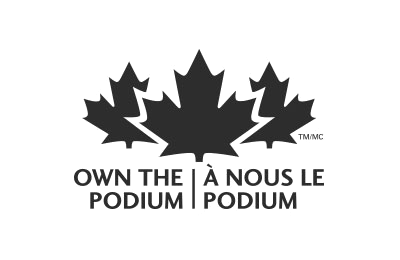Classification
A Guide to Wheelchair Rugby Classification.
Para Sport Classification
The Para sport movement has grown exponentially since its beginnings in the 1940s. Classification has been a crucial and integral part of sport for persons with disabilities (Para sport) since the beginning. The early classification systems were based on medical diagnoses, such as spinal cord injury, and were not specific for the specific activities in each sport. However, more recent transitions in classification systems from medical based to sport-specific systems evolved to where sport class was based on an athlete’s abilities specific to the physical demands of each unique sport. These systems developed from the work of many volunteers with expertise in evaluation of daily and sport activity. Most recently evidence-based classification systems are developing that are informed by research on impairment and the impact of impairment specifically on Para sport activities.
Classification is critical to achieving the International Paralympic Committee’s (IPC) mission “to enable Para athletes to achieve sporting excellence. The IPC Classification Code, first published in 2007, provided unifying principles to guide the development of classification by providing a framework for classification systems across all Para sports. The Code undergoes regular review to keep up with the rapid pace of advances in sport, medicine, technology, training, and research that inform and improve classification for all athletes in Para sport.
The systems of classification in Parasport perform two fundamental functions for supporting all athletes in achieving sport excellence:
- A classification system defines the minimum impairment required to be eligible to compete in that Para sport, thus providing a framework for determining who is (and who is not) a Para athlete.
- A classification system groups athletes into sport classes to control for the impact of impairment on the outcome of competition and ensure sporting excellence determines which athlete or team is ultimately victorious (International Paralympic Committee, 2015; Tweedy & Vanlandewijck, 2011).
These fundamental principles of classification make it possible to conduct legitimate Para sport competition and maintain competition integrity by distinguishing the very best athletes from all others.
Classification consists of a multi-step progression:
- Determine underlying health condition leading to possible eligible impairment and confirm eligible impairment/s as outlined in the IPC Athlete Classification Code.
- Determine whether Athletes meet minimum impairment criteria (MIC) of at least one eligible impairment.
- Allocation of Sport Class – a three step process that consists of:
- Severity of impairment, referred to as physical assessment or “bench test”
- Sport specific activity limitations established through standardized and novel motor tests, referred to as Technical Assessment or “sport specific activities”.
- Observation Assessment – confirmation of classification process decision-making and allocation of sport class and sport class status, referred to as Observation during Competition.
NB: some sports do not include observation assessment; and allocation of sport class and sport class status takes place after the technical assessment.
The WWR Classification System
Wheelchair Rugby, with roots in wheelchair basketball and ice hockey, began in Canada in the 1970’s as a counterpart to wheelchair basketball for persons with tetraplegia or tetra-equivalent impairment. The first classification system, which was medically based, consisted of three sport classes, largely determined by medical diagnosis and level of spinal cord injury. In 1991, the system was changed to a classification system unique to the sport activities in wheelchair rugby and was based on expert opinion. This was done for many reasons, including the need to have a system that would accommodate the growing number of athletes with a wider range of impairments (both with and without spinal cord injury; such as polio, cerebral palsy, central nervous system health conditions, peripheral polyneuropathies and limb deficiency).
The current World Wheelchair Rugby Classification system conforms to the IPC Athlete Classification Code requirement for evidence-based research and is informed by original research in wheelchair rugby. As further research continues, the classification system will be updated according to the WWR Classification Rules.
The Classification Process – Athlete Evaluation
Wheelchair rugby athletes have a variety of eligible impairments, including muscle power, limb length, passive range of motion, or coordination. The combinations of varying trunk, upper and lower extremity impairments and their impact in performing wheelchair rugby activities, which consists of ball and chair activities, is evaluated in the classification process.
To proceed through athlete evaluation, the athlete must have a verifiable and permanent impairment due to an underlying health condition that leads to an eligible impairment according to the IPC Athlete Classification Code and the WWR Classification Rules. The athlete’s sport class is specific to the impact of impairment on the fundamental activities of Wheelchair Rugby.
The Wheelchair Rugby Classification process in is based on IPC Athlete Classification Code and International Standards and consists of four steps:
- assessment of eligible impairment and underlying health condition,
- physical assessment or impairment assessment (first confirming minimum impairment criteria),
- technical assessment, and
- observation in competition assessment.
First, the athlete’s impairment and related underlying health condition is assessed to see if eligibility criteria is met for Wheelchair Rugby. (In some cases, the confirmation of eligible impairment and underlying health condition may be done prior to presenting to a classification panel.) Once confirmed eligibility criteria are met, the athlete will be assessed by a classification panel during an evaluation session to confirm if they meet the relevant Minimum Impairment Criteria (MIC) to participate in Wheelchair Rugby. Any athlete who does not comply with the MIC for Wheelchair Rugby must be allocated Sport Class Not Eligible (NE) for WWR Wheelchair Rugby, meaning they are unable to formally participate in WWR Wheelchair Rugby.
If the athlete meets the MIC, they continue the evaluation with the result being allocation of one of the seven sport classes in Wheelchair Rugby.
An Evaluation Session takes place prior to the start of game play in order to verify minimum impairment criteria and receive an initial sport class to begin play. The Physical Assessment includes trunk tests, which measure impairment of the trunk and the lower extremities, and the relevant tests for the athlete’s impairment type – such as manual muscle tests for those with motor power impairment. The Technical Assessment is next and takes place in a controlled non-competitive environment, which allows for the repeated observation of novel activities, and sport specific activities. The last part of the evaluation session is Observation in Competition, where classifiers observe athletes in the competitive environment during game play to confirm the classification process and decision making for a final determination of the athlete’s sport class and sport class status.
Occasionally, an athlete presents with characteristics of two sport classes (for instance, following physical and technical assessment tests, the athlete appears to fall between two sport classes). Standard practice in classification is to assign the athlete to the higher sport class (less impaired) to begin competition and continue on to observation during game play. An athlete who is required to complete the Observation in Competition Assessment is assigned a tracking code: Observation Assessment (OA). Observation of the athlete’s activities (ball and chair activities) during actual game play would lead to the confirmation of the athlete’s sport class. If there are inconsistencies between the physical and technical assessment results and what is observed on court during play, parts or all of the evaluation session may be repeated.
Observation in Competition Assessment must take place during first appearance. First appearance is the first time an athlete competes in a competition in a particular sport class, and it must be during the preliminary rounds (or at the end of pool play) of a competition. The classification panel attempts to make these decisions as quickly as possible, however, it is dependent on having the opportunity to adequately observe the athlete during competition.
Each athlete goes through athlete evaluation a minimum of three times before a confirmed sport status (C) will be allocated. An athlete will be designated confirmed status if the classification panel is satisfied that both the athlete’s eligible impairment and the athlete’s ability to execute the specific tasks and activities fundamental to the sport are and will remain stable. Confirmed sport class status is defined as no change in the athlete’s sport class at the conclusion of three consecutive competitions that are a minimum of 11 months apart.
If you are interested in having a preliminary athlete evaluation done, please email info@wheelchairrugby.ca. All the cost for this will be the responsibility of the organization whom the athlete is associated with, this may include travel and the classifiers time.
Athlete Responsibilities
The roles and responsibilities of athletes, athlete support personnel, and coaches are:
- to be knowledgeable of and comply with all applicable policies, rules and processes in the World Wheelchair Rugby Classification Rules;
- participate in Athlete Evaluation in good faith; and
- ensure when appropriate that adequate information related to Health Conditions and Eligible Impairments is provided and/or made available to World Wheelchair Rugby.
An athlete must complete the Athlete Evaluation Form Agreement prior to the classification process. Completed forms can be emailed to info@wheelchairrugby.ca.
Any athlete perceived as not participating in the classification process in good faith may sustain penalties such as specified in the WWR Classification Rules.
Team Point Totals
There are seven sport classes ranging from 0.5 to 3.5 with impairment scores and performance of sport activities identified for each sport class. In general, the 0.5 sport class includes those athletes with the most impairment and the 3.5 class includes those athletes with the least impairment, such as those who just meet the minimum impairment criteria for wheelchair rugby.
In WWR competitions, the point total for all four athletes actually on the court cannot exceed 8.0. An exception to this total is made for each female athlete playing on court. Each team is permitted an additional 0.5 points for each female on court.
Sport Class Profiles
To be eligible to compete in WWR Wheelchair Rugby, an athlete must have an impairment caused by a verifiable and permanent impairment and underlying health condition leading to activity limitation that impacts sport activities in Wheelchair Rugby (IPC Classification Code, 2015; WWR Classification Rules 2021).
Wheelchair Rugby was originally developed for athletes with tetraplegia due to spinal cord injury and neuromuscular conditions such as poliomyelitis. Presently, the list of eligible impairments for Wheelchair Rugby has been significantly expanded. The International Paralympic Committee defined 10 eligible impairment types for Para Sport. World Wheelchair Rugby includes six physical impairment types as eligible for Wheelchair Rugby: impaired muscle power, limb deficiency, impaired passive range of movement, hypertonia, ataxia and athetosis (IPC Classification Code, 2015; WWR Classification Rules, 2021).
The athlete‘s Sport Class is a combination of upper extremity and trunk evaluation scores. Based on that combination, athletes with the same sport class may perform in different roles and display a difference in activities.
The following are incomplete descriptions providing a very general profile of each sport class. These descriptions are by no means complete, and an athlete may display characteristics of higher or lower sport classes. For a more complete description, refer to the WWR Classification Rules and WWR Classifier Handbook.
Class 0.5
Typical role on court
Main role is as blocker, not a major ball handler.
Chair skills/function
- Slow acceleration and uni-directional manoeuvring because of proximal weakness
- Because of extensive proximal shoulder weakness and lack of triceps function forward head bob present when pushing
- Because of lack of triceps, pulls on back part of the wheel for push stroke using biceps by bending elbows; elbows are also out to side when pushing (called an “unopposed biceps push”)
- Limited wheel contact while pushing because of wrist extensor weakness and lack of other wrist and hand function, may use forearm on wheel for starts, turns and stops
Ball skills/function
- Because of proximal shoulder weakness, arm and wrist weakness, traps direct passes on lap or bats it in from limited range
- Bats ball using “underhand volleyball pass” for longer range pass or for shorter range pass uses “flip pass”
Class 1.0
Typical role on court
Blocker, may in-bound ball, not a major ball handler.
Chair skills/function
- Because of increased strength in upper chest and shoulders, may present multi-directional maneuvering (start, stop, turns). Can turn in all directions without stopping, easier and faster turning than 0.5 athlete, but still slow acceleration
- Because of proximal shoulder weakness and limited triceps function, may have slight head bob when pushing
- Because of limited triceps (muscle power impairment) or short upper extremities (limb deficiency) has longer but still limited push on wheel (combination of push and pull on back part of wheel)
- Because of wrist extensor weakness and lack of other wrist and hand function, may use forearm on wheel for starts, turns and stops
- May present partial trunk stabilization (combination with trunk 0.5 and 0.5 UE)
Ball skills/function Because of shoulder weakness may use „underhand volleyball pass“ or „flip pass“ but may present weak chest pass or forearm pass or wrist catch
Class 1.5
Typical role on court
Excellent blocker, in-bound player, also may be occasional ball handler.
Chair skills/function
- Increased shoulder strength, triceps and stability (muscle power impairment)/ longer upper extremities length allows for more effective and efficient pushing, longer wheel contact
Ball skills/function
- Increased shoulder strength and stability allows for some distance and consistency to chest pass and one hand pass (with assisting second hand)
- Because of wrist imbalance has limited ball security when passing
Class 2.0
Typical role on court
Increasing role on court as ball handler.
Chair skills/function
- Very strong and stable shoulder that allows for good pushing speed on court
- Long wheel contact
Ball skills/function
- Because of strong shoulder, triceps and stable wrists, presents effective chest pass with control over moderate distance
- Because of lack of finger flexion, there is limited ball security against defence during passing
- Can hold ball with wrists firmly, but has no/ little hand function
- Good overhead two-handed pass
- Poor one-handed pass
Class 2.5
Typical role on court
Ball handler and fairly fast playmaker.
Chair skills/function
- Because of excellent shoulder strength and stability will see good pushing speed on court
- Partial grip is used to advantage on the push rim when challenged
Ball skills/function
- Reasonably balanced finger flexion and extension without true grasp and release
- Dribbles the ball safely, but supinates forearm to scoop the ball onto the lap
- Due to finger flexion strength capable of performing one-handed overhead pass, but limited accuracy and distance because of weaker intrinsic hand muscles
- Safe two-handed catching of passes, usually scooping ball to lap. May catch a ball single-handedly and scoop to lap or chest
- Improved ball security compared to 2.0 hand, due to improved ability to isolate wrist/finger function
Class 3.0
Typical role on court
Very good ball handler and fast playmaker.
Chair skills/function
- Because of balanced finger function, athlete can grip wheelchair rim increasing pushing speed
- Excellent chair manoeuvring
Ball skills/function
- Because of function in fingers, can control ball in varying planes of movement for passing, dribbling, catching and protecting ball
- Can multiple dribble a ball with one hand with good control
- Can pass and catch a ball with one hand
- Functional grasp and release with limited thumb function
Class 3.5
Typical role on court
Major ball handler, No. 1 ball carrier
Chair skills/function
- Has some trunk function, therefore stable in wheelchair and able to use trunk for ball and chair activities
Ball skills/function
- Because of combination of hand and trunk function, usually has excellent ball control with controlled one-handed passing for distance and excellent ball security during passing and receiving
Become a Classifier
Classifying in the exciting game of Wheelchair Rugby is not only fun, but it’s also rewarding. We are always looking for classifiers to officiate at all levels.
No previous experience in wheelchair rugby? No problem! Many classifiers come from a background in Physiotherapy, Occupational Therapy, Medicine and some with a Kinesiology background who have worked in Rehab or a Sports Medicine setting. Even if you’ve never worked in a sport setting before, we can help you learn to become a classifier. We strongly recommend having a foundation in Manual Muscle Testing (MMT) and some knowledge of neuromuscular conditions such as Spinal Cord Injury (SCI), Charcot-Mary-Tooth (CMT), Post-Polio Syndrome (PPS) to name a few.
Canadian Wheelchair Rugby Classification Certification Pathway
BENEFITS OF BECOMING A Classifier:
- Opportunity to give back to the community
- Great way to be active and stay healthy
- Meet new people and develop friendships
- Get involved at a level that suits you (Domestic, National or International)
- Personal satisfaction with achieving your own goals
- Travel opportunities – including international travel
HOW DO I GET INVOLVED?
Entry level classification clinics are available throughout the year in regions across Canada. If you are interested in becoming a classifier, please complete our Classifier Intake Form.
Domestic Classification Review
Accordingly, an external consulting firm was asked to assess the current state of Classification in Canada and make recommendations for a domestic Classification strategy. In consultation with the Canadian wheelchair rugby community and international peers, supplemented by a literature review, a domestic Classification strategy was formed around the following 8 core areas: objectives and governance, policies and procedures, creating more opportunities for Classification, classifier recruitment and training, knowledge sharing and education, safe sport, communications, and international advocacy.
View Domestic Classification Review Here
Class & Status Codes
- C – Confirmed
- R – Review (further evaluation required, protest)
- N – New
- FRD 1 – This class allocated once by an International Panel (fixed review date)
- FRD 2 – This class allocated twice by a national Panel (fixed review date)
- NE – Not eligible
- CNC – Classification not complete/unable to be completed
- IM – Intentional Misrepresentation (suspended from participation in all Wheelchair Rugby Canada sanctioned events)



